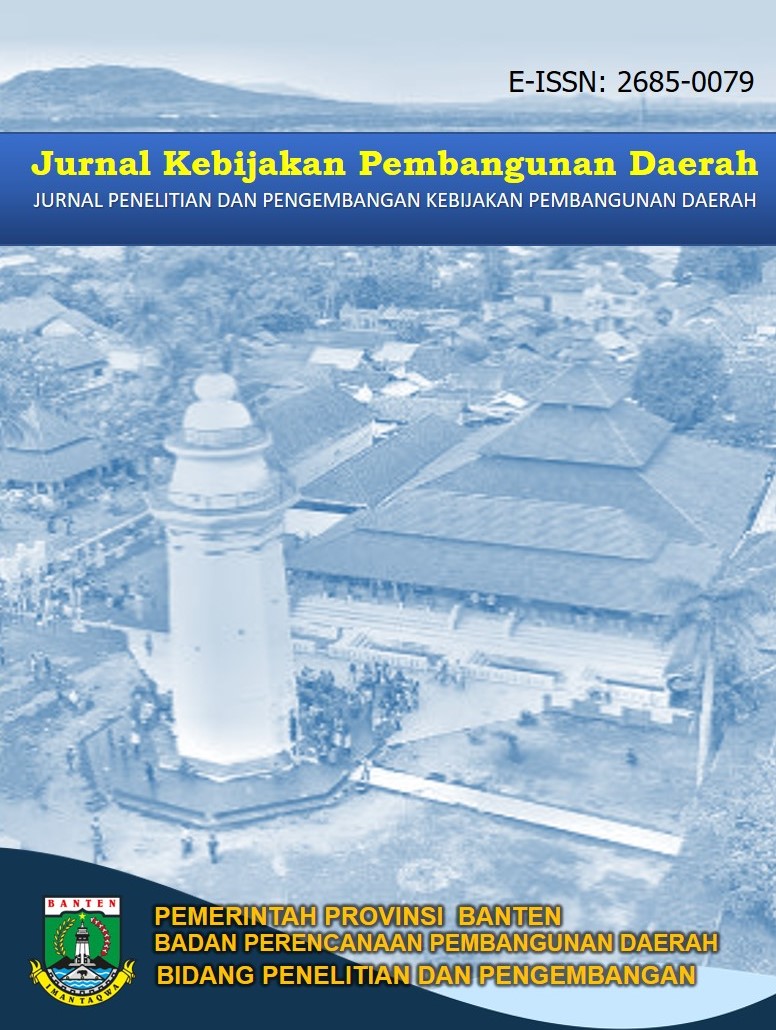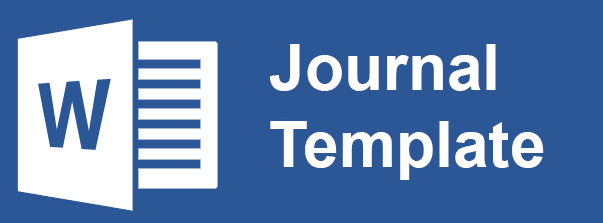STRATEGI KONSERVASI UNTUK MENGURANGI EROSI HULU DAERAH ALIRAN SUNGAI BRANTAS, JAWA TIMUR
Abstract
Sedimentation caused by erosion in the Lesti Sub-Watershed and the upstream part of the Brantas Watershed as a whole has an impact on disrupting the role of the Sengguruh Dam in supporting economic activity in East Java. Reducing erosion in upstream areas during their development requires an environmental science approach that harmonizes economic, social, and environmental aspects. This study aims to: Assess the influence of population pressure, community behavior, and land use on erosion in the Lesti Sub-watershed; Predict erosion in the Lesti Sub-watershed; and Provide an environmental science-based conservation strategy for the Lesti Sub-watershed in the context of sustainable development.. The research method used was mixed methods, both through GIS assistance for the Modify Universal Soil Loss Equation erosion formula and also through questionnaires and interviews with communities in the Lesti sub-watershed area. From research on the Lesti sub-watershed, the average erosion rate obtained is 153,868 tons/ha/year, which means it exceeds the minimum tolerance limit. Of the 12 sub-districts in the Lesti sub-watershed area, 6 (six) sub-districts have problems from the environmental aspect through the condition of several sub-districts with high erosion hazard levels. Erosion is correlated with people's knowledge, attitudes, and behavior in the economic aspects through population pressure and social conditions through land use patterns. Based on environmental science, conservation priority recommendations are for these 6 (six) sub-districts by improving soil and water conservation efforts, both vegetatively and civil-technically (environmentally), environmental education (social), and community economic empowerment (economy).
References
Ariani, R.D., & Harini, R. (2012). Tekanan Penduduk Terhadap Lahan Pertanian Di Kawasan Pertanian (Kasus Kecamatan Minggir Dan Moyudan). Jurnal Bumi Indonesia, 1(3), 1-8.
Arsyad, S. (2006). Konservasi Tanah dan Air. Bogor: IPB Press
Asdak, C. (2010). Hidrologi dan Pengelolaan Daerah Aliran Sungai. Edisi Kelima (Revisi). Yogyakarta: Gadjah Mada University Press.
Bappenas. (2015). Kajian Pengaruh Kebijakan Konservasi Sumber Daya Air di dalam DAS Terhadap Sektor Kehutanan dan Sektor lainnya. Jakarta: Bappenas.
Bellfield, B., Leggett, M., Trivedi, M., Pareira, J., Gangga, A. (2016). How Can Indonesia Achieve Water, Energy and Food Security?. Jakarta: WCS and Global Canopy Programme.
Bisri, M., Limantara, L. M., Prasetyorini, L., & Chasanawati, D. (2017). Application of the Kineros model for predicting the effect of land use on the surface run-off Case study in Brantas sub-watershed, Klojen District, Malang City, East Java Province of Indonesia. Journal of Water and Land Development, 35(1), 3–9. https://doi.org/10.1515/jwld-2017-0062
Cahyo, S. N., & Yusuf, D. N. (2023). Analisis Spasial Tekanan Penduduk Terhadap Lahan Pertanian di Daerah Aliran Sungai Laeya Kabupaten Konawe Selatan. Jurnal Perencanaan Wilayah, 8(1), 44-55. https://doi.org/10.33772/jpw.v8i1.367
Common, M. & Stagl, S. (2005). Ecological Economic: An Introduction. New York: Cambridge University Press.
Creswell, J.W. (2014). Research Design: Qualitative, Quantitative, and Mixed Methods Approaches. Los Angeles: SAGE Publications
Djajasinga, V., Masrevaniah, A., & Juwono, P. T. (2013). Kajian Ekonomi Penanganan Sedimen Pada Waduk Seri Di Sungai Brantas (Sengguruh, Sutami Dan Wlingi). Jurnal Teknik Pengairan: Journal of Water Resources Engineering, 3(2), pp.143–152. Retrieved from https://jurnalpengairan.ub.ac.id/index.php/jtp/article/view/159
Euler, J., & Heldt, S. (2018). From information to participation and self-organization: Visions for European river basin management. Science of The Total Environment, 621, 905–914. https://doi.org/10.1016/j.scitotenv.2017.11.072
Fuady, I., Prasanti, D., & Indriani, S. S. (2020). Penerapan teori plan behavior: faktor yang mempengaruhi niat perilaku hidup bersih dan sehat. Jurnal Berkala Kesehatan, 6(1), 24-30.
GoI. (2014a). Peraturan Presiden No. 2 Tahun 2015 tentang Rencana Pembangunan Jangka Menengah Nasional Tahun 2015 – 2019. Jakarta: Pemerintah Indonesia (Government of Indonesia)
GoI. (2014b). Undang-undang Nomor 37 Tahun 2014 tentang Konservasi Tanah dan Air. Jakarta: Pemerintah Indonesia (Government of Indonesia)
Hardjowigeno S. (1995). Ilmu Tanah. Jakarta: Akademika Pressindo.
Jeloudar, F. T., Sepanlou, M.G., Emadi, S.M. (2018). Impact of land use change on soil erodibility. Global Journal Environment Science Manage.,4(1): 59-70. https://doi.org/10.22034/gjesm.2018.04.01.006
Kindu, M., Schneider, T., Döllerer, M., Teketay, D., & Knoke, T. (2018). Scenario modelling of land use/land cover changes in Munessa-Shashemene landscape of the Ethiopian highlands. Science of The Total Environment, 622-623, 534–546. https://doi.org/10.1016/j.scitotenv.2017.11.338
Mas, S.R., Suking, A., & Haris, I. (2021). Asistensi dan Edukasi Penerapan Keseimbangan Tiga Dimensi Pembangunan Berkelanjutan (Lingkungan, Sosial dan Ekonomi) dalam Mendukung Pencapaian SDGs Desa . J-ABDI: Jurnal Pengabdian Kepada Masyarakat, 1(2), 87–98. https://doi.org/10.53625/jabdi.v1i2.45
Maulana, R., Halim, I., Salmande, A., & Hakim, A. (2023). Analisis Kesiapan Masyarakat Desa dalam Mengembangkan Wisata Bendungan Lama Pamarayan Kabupaten Serang. Jurnal Kebijakan Pembangunan Daerah, 7(1), 32 - 47. https://doi.org/https://doi.org/10.56945/jkpd.v7i1.208
Ma’wa, J., Andawayanti, U., & Juwono, P.T. (2015). Studi Pendugaan Sisa Usia Guna Waduk Sengguruh dengan Pendekatan Erosi dan Sedimentasi. Jurnal Teknik Pengairan: Journal of Water Resources Engineering
Nabi, G., Hussain, F., Wu, R.-S., Nangia, V., Bibi, R., and Majid, A. (2017). Optimizing micro watershed management for soil erosion control under various slope gradient and vegetation cover conditions using SWAT modeling. Hydrol. Earth Syst. Sci. Discuss., https://doi.org/10.5194/hess-2017-532.
Pambudi, A.S., & Kusumanto, T. (2023). Water Resources Governance in Indonesia Towards Environmental Sustainability Along with Social and Economic Development. In: Triyanti, A., Indrawan, M., Nurhidayah, L., Marfai, M.A. (eds) Environmental Governance in Indonesia. Environment & Policy, vol 61. Springer, Cham. https://doi.org/10.1007/978-3-031-15904-6_16
Pambudi, A.S. (2022). Balancing infrastructure, ecosystem conservation, and community approaches on integrated development planning of Citarum Watershed. Indonesian Journal of Applied Environmental Studies (InJAST), 3(1), 34-41. https://doi.org/10.33751/injast.v3i1.4209
Pambudi, A. S., Moersidik, S.S. & Karuniasa, M. (2021). Analysis of Recent Erosion Hazard Levels and Conservation Policy Recommendations for Lesti Subwatershed, Upper Brantas Watershed. Jurnal Perencanaan Pembangunan: The Indonesian Journal of Development Planning, 5(1), 71-93. https://doi.org/10.36574/jpp.v5i1.167
Pambudi, A. S. (2021). Watershed Approach of Integrated Water Resources Conservation in Indonesia. Academia Letters, Article 3225. https://doi.org/10.20935/AL3225
Pambudi, A. S., & Moersidik, S. S. (2019). Conservation direction based on estimation of erosion in Lesti sub-watershed, Malang District. IOP Conference Series: Earth and Environmental Science, 399(1), [012097].https://doi.org/10.1088/1755-1315/399/1/012097
Pambudi, A.S. (2019). Watershed Management in Indonesia: A Regulation, Institution, and Policy Review. Jurnal Perencanaan Pembangunan: The Indonesian Journal of Development Planning, 3(2), 185-202. https://doi.org/10.36574/jpp.v3i2.74
Silalahi, B. (2017). Pengaruh Pengetahuan tentang Sampah dan Ketersediaan Sarana Prasarana terhadap Perilaku Ibu Membuang Sampah yang Berpotensi Bencana Banjir di Daerah Aliran Sungai Deli Kota Medan. Jurnal Ilmiah Keperawatan IMELDA, 3(1), 43-52. Retrieved https://jurnal.uimedan.ac.id/index.php/jurnalkeperawatan/article/view/256
Reddy, V.R., Saharawat, Y. S., & George, B. (2017). Watershed management in South Asia: A synoptic review. Journal of Hydrology, 551, 4–13. https://doi.org/10.1016/j.jhydrol.2017.05.043
Rusli, S., Widono, S., & Indriana, H. (2009). Tekanan Penduduk, Overshoot Ekologi Pulau Jawa, dan Masa Pemulihannya. Sodality: Jurnal Sosiologi Pedesaan, 3(1),77-112. https://doi.org/10.22500/sodality.v3i1.5871
Setyono, E., & Prasetyo, B. (2012). Analisis Tingkat Bahaya Erosi Pada Sub-DAS Lesti Kabupaten Malang Menggunakan Sistem Informasi Geografis. Media Teknik Sipil, 10 (2), 114 – 127. https://doi.org/10.22219/jmts.v10i2.1786
Soemarwoto, O. (1985). Ekologi, Lingkungan Hidup dan Pembangunan. Jakarta: Jambatan.
Soemarto, C.D. (1987). Hidrologi Teknik. Surabaya: Penerbit Usaha Nasional.
Suresh, R. (1993). Soil and Water Conservation Engineering. Nem Chand Jain, Delhi: Standard Publisher Distributors Nai Sarak
Utomo, W.H. (1994). Erosi dan Konservasi Tanah. Malang: IKIP
Yupi, H.M. (2006). Studi Model WEPP (Water Erosion Prediction Project) dalam Upaya Pengaturan Fungsi Kawasan
Pada Sub-DAS Lesti Berbasis Sistem Informasi Geografi (SIG). Tesis. Malang: Universitas Brawijaya

This work is licensed under a Creative Commons Attribution-NonCommercial 4.0 International License.

Jurnal Kebijakan Pembangunan Daerah is licensed under a Creative Commons Attribution-NonCommercial-Sharealike 4.0 International License.


11.jpg)


.png)
